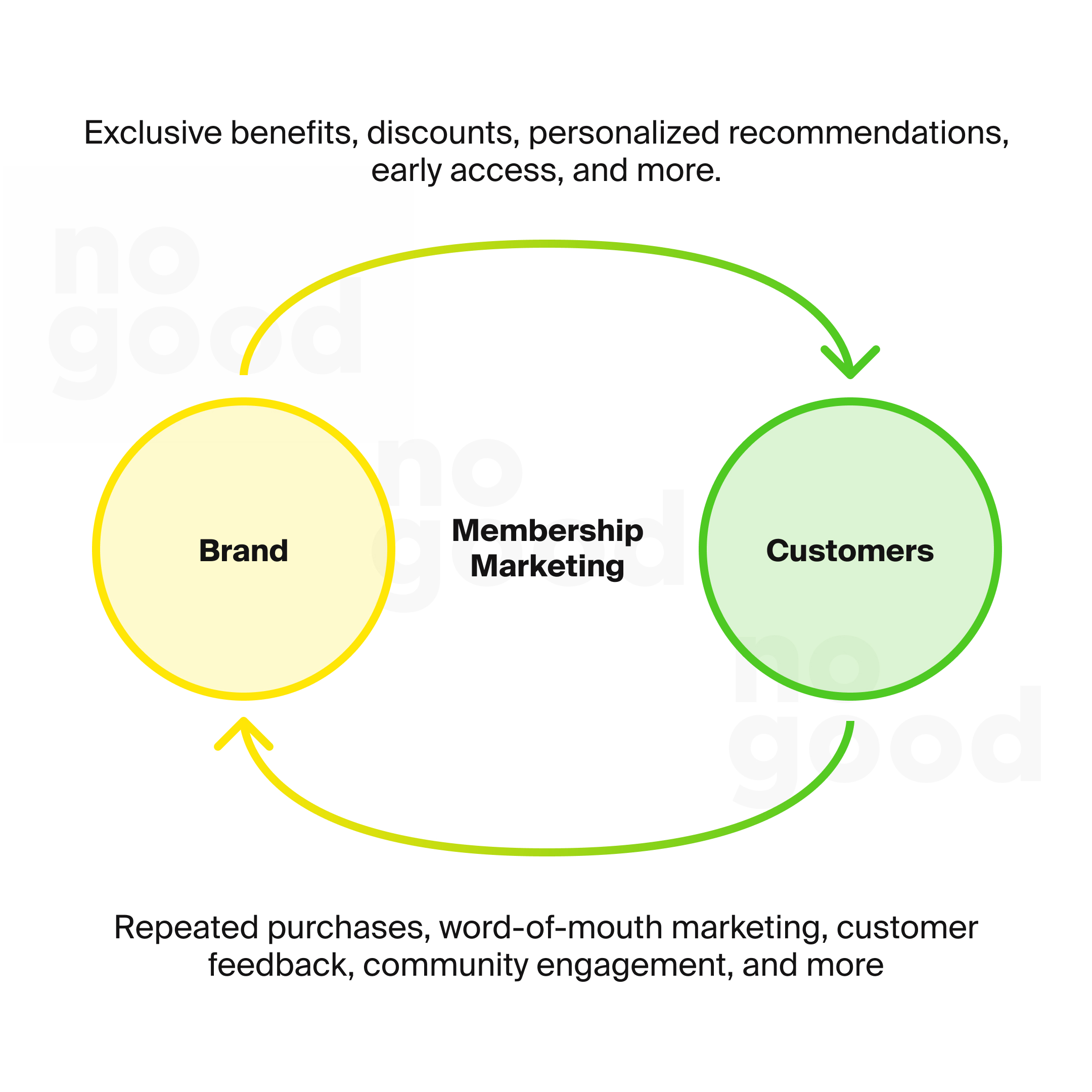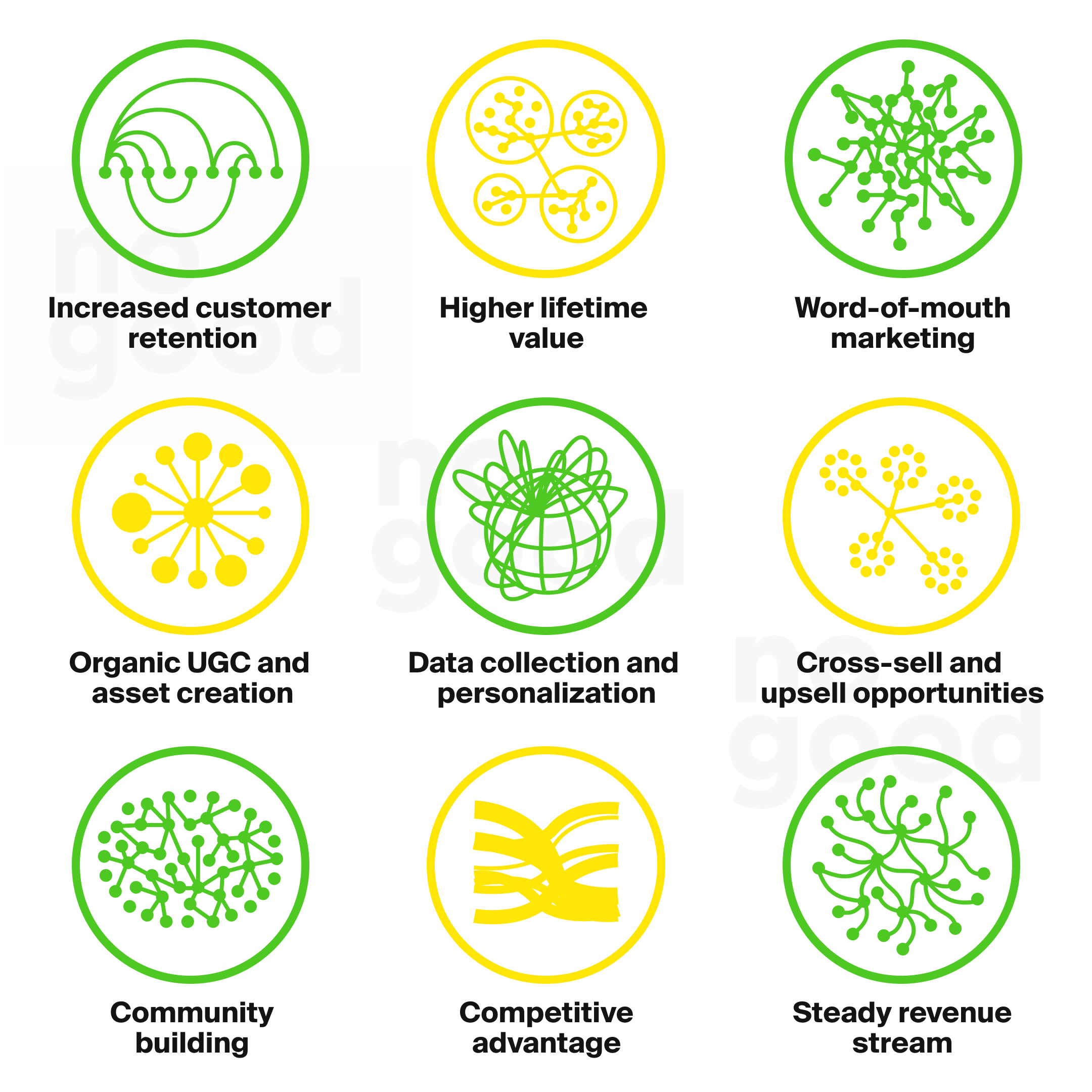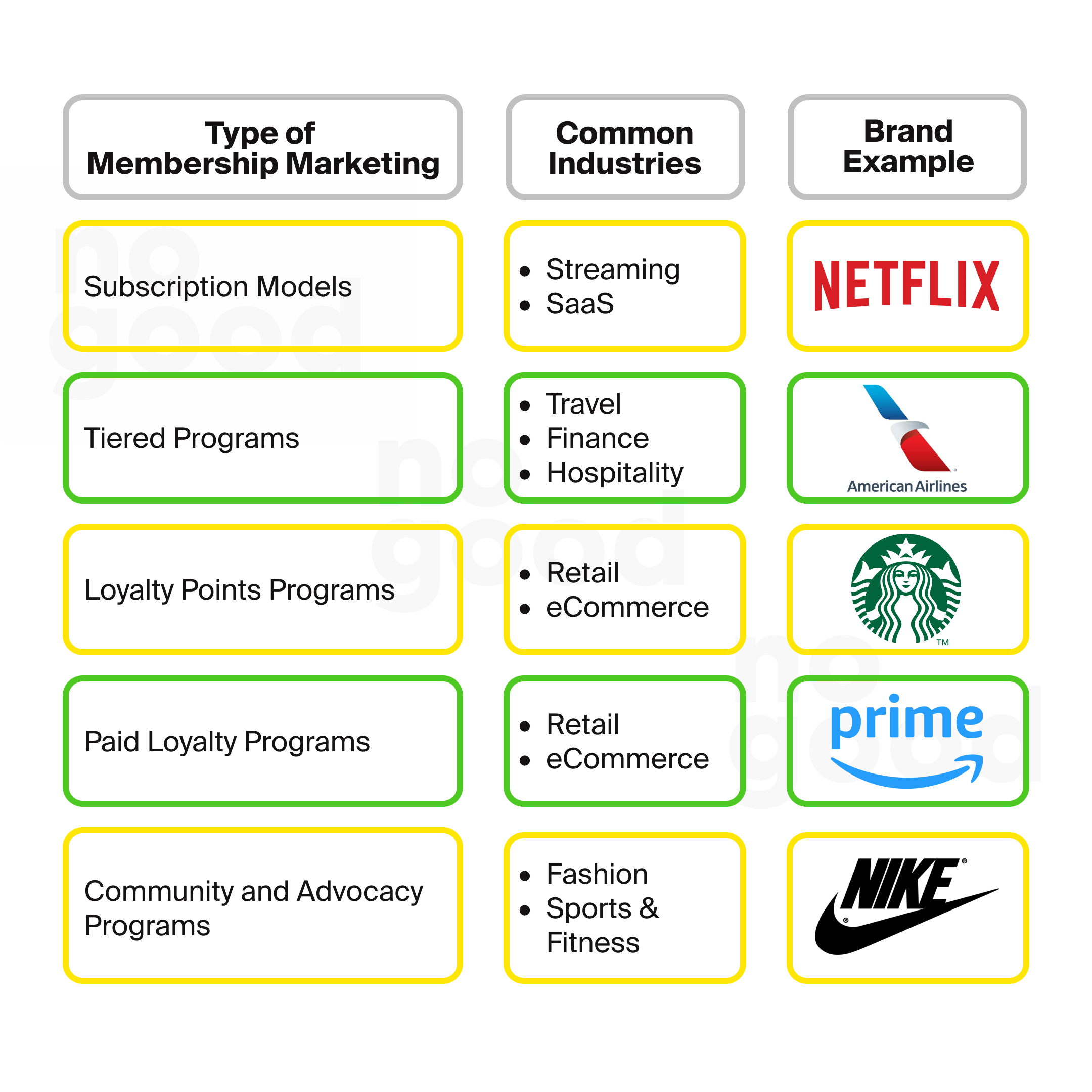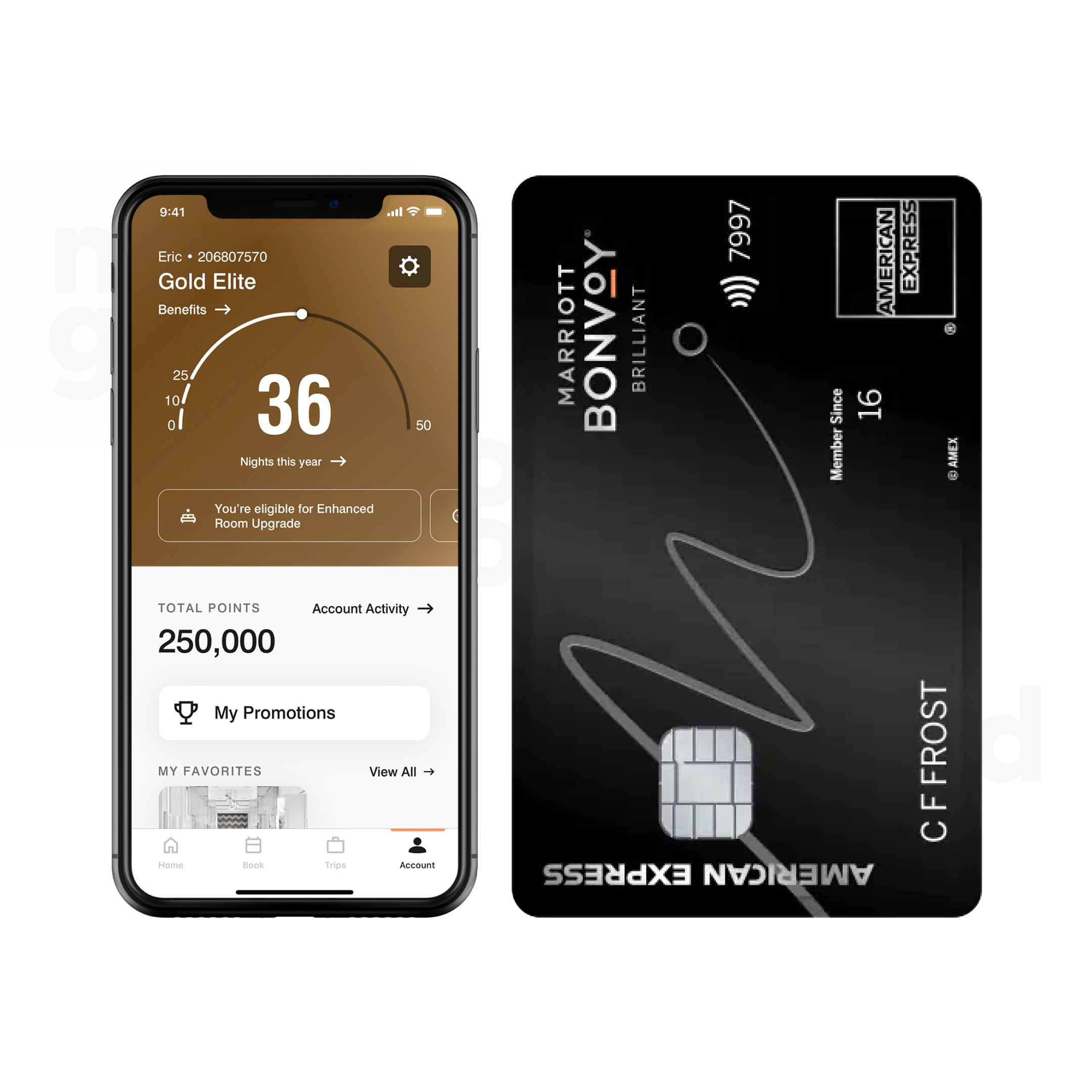The cost of acquiring new customers is five times higher than the cost of retaining existing customers. This is not at all a surprising statistic, given that acquiring new customers requires additional spending on advertising, targeting, and onboarding. So, how can companies focus on retaining existing customers to lessen their spend on customer acquisition? Two words: Brand loyalty.
Brand loyalty is the unwavering commitment and attachment that consumers feel toward a particular brand, driven by their positive and consistent experiences with that brand’s products or services. It signifies a strong preference for the brand and a reluctance to switch to competitors. Cultivating strong brand loyalty across a large and diverse customer base can be challenging, which is why many companies have turned to membership marketing as a model for fostering loyalty.
From Starbucks’ web3 loyalty program to Sweetgreen’s “Sweetpass” membership, more and more brands are exploring membership and subscription models as a way to ensure recurring revenue and build longer-term brand loyalty. While the concept of membership programs are by no means new, we’re beginning to see an increase in these types of loyalty models, as well as growth in the innovation behind the next generation of customer loyalty. Let’s take a closer look at the what, how, and why of today’s new era of membership marketing.
What is membership marketing?
Membership marketing is a strategic approach that goes beyond traditional customer acquisition and retention tactics. It’s a framework that leverages the power of exclusivity, engagement, and personalization to build and maintain a loyal and committed user base. At its core, membership marketing aims to transform casual customers into brand advocates, creating a community of loyal enthusiasts who not only purchase your products or services but also actively promote and engage with your brand.

In membership marketing, customers are not just consumers; they are members of an exclusive community. This membership often comes with perks, rewards, or privileges that set them apart from non-members. These incentives can range from discounts and special access to premium content, personalized recommendations, and early product releases.
Essentially, membership marketing aims to forge a deeper emotional connection between the brand and its customers, where customers feel valued and appreciated, and in return, they provide their loyalty and support. This approach can be especially effective in today’s competitive marketplace, where consumers are inundated with choices and are looking for brands that offer not only high-quality products but also a unique and personalized experience.
What are the advantages of membership marketing?
Membership marketing is a dynamic strategy with a host of advantages that make it a pivotal component of brand success. Perhaps the most notable benefit is the enhanced customer loyalty it cultivates. By offering exclusive perks and personalized experiences, membership programs create a sense of belonging, making members more inclined to stay with a brand over time.
This increased loyalty not only drives retention but also deepens the emotional connection between customers and the brand, reducing the likelihood of customers switching to competitors. In addition to the primary advantage of fostering brand loyalty, membership marketing can also have a slew of additional benefits, including:
- Increased customer retention
A well-executed membership program encourages members to continue their engagement with the brand. This results in higher customer retention rates, reducing churn and the cost of acquiring new customers.
- Higher lifetime value
Loyal members tend to spend more over the long term. They see value in the brand’s offerings and are willing to invest more in their products or services, thereby increasing their lifetime value as customers.
- Word-of-mouth marketing
Satisfied members are more likely to become brand advocates. They often share their positive experiences with friends, family, or social media followers, leading to organic word-of-mouth marketing, which can be highly effective in attracting new customers.
- Organic UGC and asset creation
On the same note as word-of-mouth marketing, users who become brand advocates are also more likely to share their experiences with a brand or product on social media. With the creator’s consent, brands can use these user-generated assets for their own brand content or ads, or even leverage user testimonials as social proof for retargeting or acquisition efforts.
- Data collection and personalization
Membership programs allow brands to collect valuable data on their members’ preferences and behavior. This data can be used to personalize marketing efforts, making the brand’s offerings more relevant to individual members. In some cases, brands may even tap into their member community to ask for direct customer feedback through focus groups, surveys, or online Q&As.
- Cross-sell and upsell opportunities
Membership programs offer a platform for promoting related products or services to existing members. This opens up opportunities for cross-selling and upselling, increasing the average transaction value.
- Community building
Membership programs create a sense of community among members who share a common interest or passion for the brand. This community can serve as a powerful asset for feedback, engagement, and brand advocacy.
- Competitive advantage
A well-structured membership program can set a brand apart from competitors. It can be a unique selling point that attracts and retains customers.
- Steady revenue stream
Subscription-based membership models, such as those used by streaming services or software companies, provide a steady and predictable revenue stream, which can be crucial for financial stability and growth.

Types of membership models
Membership marketing is a versatile strategy, and its success lies in its adaptability to various business models and industries. One of its key features is the diversity of membership program types that brands can employ. Here are a few prominent types of membership marketing:
Subscription models
These programs involve regular, often monthly, payments in exchange for access to a brand’s products or services. Think of streaming services like Netflix or subscription boxes like Birchbox. These models provide a steady revenue stream and foster loyalty through ongoing engagement. Subscription models are most prevalent in the media and entertainment industry, including streaming services like Netflix, Spotify, and Disney+. Subscription models are also found in software and SaaS companies, where customers pay regularly for access to digital tools and services.
Tiered programs
Tiered membership programs categorize customers into different levels based on their spending or engagement. Each tier offers progressively better rewards, encouraging customers to increase their loyalty to reach higher status. Tiered membership models are frequently utilized in the airline industry, with frequent flier programs offering different levels of benefits based on a traveler’s miles or segments flown. In the financial sector, credit card companies often employ tiered loyalty programs that grant cardholders varying degrees of rewards and privileges.
Loyalty points programs
In these programs, customers earn points with each purchase, which they can later redeem for discounts, free products, or other rewards. The allure of accumulating points keeps customers engaged and incentivizes repeat business. Loyalty points programs are a common choice for retail and e-commerce businesses. This model allows customers to accumulate points with each purchase, which can then be redeemed for discounts or free products. Many coffee shops, hotels, and online retailers use this approach to incentivize repeat business.
Paid loyalty programs
Some brands offer premium, paid membership programs, providing exclusive benefits, early access, and personalized services to members. Amazon Prime, for instance, offers a range of benefits for a monthly fee, including free shipping and access to streaming services.
Community and advocacy programs
Beyond just rewards, some membership programs focus on creating a sense of community and advocacy. Industries that rely on brand advocacy and a sense of belonging often use community-based membership models. This approach is common in sectors like outdoor gear and fashion, where brands aim to build a passionate following. Members actively engage in discussions, forums, and events to build a community of enthusiasts.

The choice of membership model should align with a brand’s unique value proposition and customer base. One size hardly ever fits all — meaning different industries and customer segments may require distinct approaches, and crafting the right membership program is a key to success.
Keep in mind that it is also entirely possible and, in some cases, even beneficial for brands to have a combination of multiple subscription models, giving customers more flexibility in the type of commitment they want to have. For example, Marriott International, one of the world’s largest hotel chains, offers various membership models within its loyalty program.
Marriott Bonvoy, the brand’s loyalty program, operates on a points-based system. Members earn points for each stay at Marriott properties, which they can later redeem for free nights, room upgrades, and other benefits. This is a classic loyalty points program.Within Marriott Bonvoy, there are several tiers or elite statuses, such as Silver, Gold, Platinum, and Titanium.
Members can achieve these statuses by staying a certain number of nights per year or accumulating a specific number of points. Each tier offers progressively better perks, including late checkout, lounge access, and room upgrades. In addition to the loyalty program, Marriott offers a subscription-based model known as “Marriott Bonvoy Brilliant™ American Express® Card.”
Cardholders pay an annual fee to access premium benefits, including complimentary elite status, annual free night awards, and bonus points for eligible purchases. Each of these slightly different membership models targets a specific subgroup of their target audience segment, and in doing so maximizes their opportunity to build loyalty with each part of their user base.

What is an example of membership marketing?
Sweetgreen’s “Sweetpass” membership model is a $10 per month loyalty-subscription hybrid
program that gives customers $3 off every order. This was a natural move as Sweetgreen had been struggling with profitability with the rise of more people working from home post-pandemic. To achieve profitability, Sweetgreen had to double down on its existing customer base and offer a new form of membership to reward and retain their most loyal customers.

Sweetpass is a genius move on Sweetgreen’s part because although the customer’s main incentive is the cost-savings the model offers, it still creates more loyalty towards the brand in the long run. Furthermore, since the program is entirely app-based, it gives Sweetgreen access to huge amounts of aggregate user data to inform their future marketing strategies and product developments.
Interestingly, certain membership models, particularly in the F&B industry, tend to create a secondary or spillover behavior where subscribers spend even more than they would originally have spent, just because of their already-established loyalty. According to data from Pret A Manger’s coffee subscription program, subscribers spend 4 times as much as non-subscribers due to this secondary effect.
As part of this new membership marketing initiative, sweetgreen also launched “The Market,” an online merchandise store, debuting a selection of apparel, accessories, and gear. The brand will introduce new items weekly, and, as a bonus for Sweetpass members, they will receive exclusive early access to shop these collections before the public release.
There’s also a community engagement and community aspect built into the program, where Sweetpass+ members will have the opportunity to participate in a “Friends of Earth” perk, enabling them to help select a carbon reduction partner. Sweetgreen will factor in these submissions when choosing an organization to support at the end of the year, reflecting the brand’s dedication to its carbon neutrality goal by 2027, as highlighted in its recent Impact Report.
“Friends of Earth” serves a dual purpose by not only engaging customers in sustainability initiatives but also aligning with the brand’s mission-driven approach. Allowing members to participate in choosing a carbon reduction partner amplifies the sense of community and shared values within the program. Moreover, it leverages collective action for a more significant environmental impact, reinforcing Sweetgreen’s commitment to sustainability.
By factoring in these submissions when selecting an organization to support, the brand not only involves its customers in philanthropy but also demonstrates transparency and accountability, which can enhance the brand’s reputation and resonate with eco-conscious consumers. This eco-friendly perk represents a forward-thinking and socially responsible approach to loyalty programs, which can further solidify Sweetgreen’s position as a brand that goes beyond serving nutritious food to actively contributing to environmental well-being.
How do you promote your membership?
Promoting your membership program effectively is crucial to its success. After all, it doesn’t matter how great your membership benefits are if your customers aren’t aware of them. Here are some strategies to consider when promoting your membership program:
1. Multi-Channel Marketing:
- Email campaigns: Use targeted email campaigns to reach existing customers and inform them about the benefits of your membership program. Make sure to highlight the value they’ll receive by joining.
- Social Media: Leverage your social media platforms to create awareness about the program. Share engaging posts, videos, and customer testimonials to showcase the advantages of membership.
- Website Promotion: Design a dedicated section on your website that provides detailed information about the program. Ensure it’s easy to navigate and sign up from this section.
- In-Store Promotion: If you have physical locations, utilize in-store signage, brochures, and trained staff to inform customers about the program.
2. Referral Programs
Encourage your existing members to refer friends and family by offering incentives. This can be in the form of discounts, loyalty points, or exclusive access. For example,Airbnb’s “Refer a Friend” program capitalizes on the appeal of travel and the desire for discounted accommodations, encouraging existing Airbnb Plus members to actively market the service to their connections.
3. Partnerships
Collaborate with other brands or complementary businesses to promote your membership program. Co-marketing can expand your reach and introduce your program to new audiences. For example, Bumble and Netflix partnered for a limited-time “Netflix Nights In” initiative, where the Bumble app would ask users questions about popular Netflix shows, and users could play against their match to see who could answer more questions correctly.
Each week, the questions revolve around one show, such as “Emily in Paris,” “Stranger Things,” or “Squid Game.” This co-marketing partnership initiatives widened the audience base of both brands, and uses an element of gamification to increase user engagement. It also fosters and builds on the community aspect of audiences’ favorite Netflix shows and films to build further loyalty.
4. Member stories and testimonials:
Share success stories and testimonials from your satisfied members. Real-life experiences can be compelling and relatable, convincing potential members of the value they’ll receive.
5. Launch events
Create buzz around your membership program by hosting a launch event. This can be a physical or virtual event that offers insights into the program’s benefits and encourages immediate sign-ups.
Promoting your membership program is an ongoing effort. It requires a mix of marketing channels, clear communication of the program’s value, and a user-friendly sign-up process. By understanding your audience, using data-driven strategies, and continually refining your approach, you can effectively promote and grow your membership program.
Innovating for the next stage of membership marketing
The current model of membership marketing might work — but it won’t work forever. Almost every business today has some form of membership or loyalty program in place, meaning that the traditional model of membership marketing can and will become somewhat outdated after some time. Recent studies have shown that most customers don’t even participate in these membership programs, and those that do only do so for a limited period of time.
Research by Forter found that a staggering 45% of existing loyalty program accounts are inactive, meaning consumers are not tracking or redeeming new points. There are a few reasons why existing membership marketing programs are no longer effective, the first being that as membership marketing grows in popularity across different brands and industries, consumers are inundated with simply too many programs to keep up with.
Secondly, today’s consumers are also more apprehensive than ever about sharing their data, posing a challenge to membership programs that necessitate some form of data collection for purposes of personalization or product feedback.
What does this all mean for the next stage of membership marketing?
Today’s consumers want new forms of membership programs that emphasize privacy, flexibility, personalization, and a sense of community or belonging where they feel comfortable expressing themselves. While reward programs or engagement initiatives may work to boost sales, these are not inherently relationship-building mechanisms that build sustained loyalty, belonging, or trust. They may create repeat purchases and fuel revenue growth, but these purely transactional relationships don’t necessarily signify a long-term emotional commitment to the brand.
At a time when consumers are feeling lonelier than ever, there’s an opportunity for the model of customer loyalty to evolve beyond mere repeated transactions. Cultivating a sense of belonging runs deeper than collecting points and redeeming rewards — it’s also about connecting with the right communities and creating platforms for customers to engage with one another without significant brand interference.
For example, LEGO created LEGO Life, a social media app for children under 13 that lets users share their handiwork and comment on each other’s creations.
LEGO Life has grown to over 10 million members, demonstrating the power of a strong online community that’s also an organic way for the brand to enhance brand awareness and customer loyalty. Similarly, LEGO’s adult customer base is encouraged to join the brand’s LEGO IDEAS online forum, which allows users to share images of their work and vote on new ideas for the brand to produce.
Although these online communities don’t necessarily follow the traditional model of membership marketing that consumers have come to know and expect, they represent a new era of loyalty programs that strive to foster long-term loyalty through emotional commitment and community belonging as opposed to more transactional revenue grabs.

Are you ready to create long-term customer loyalty and start building a community around your brand? You know who to ask.







